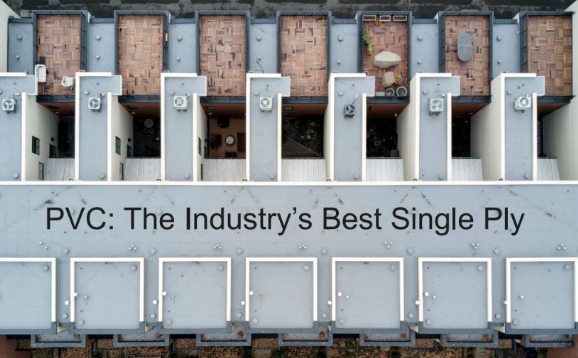PVC: The Industry's Best Single Ply
LUNCH & LEARN: CONTINUING EDUCATION SERIES

Course Accreditation:


International Institute of Building Enclosure Consultants (IIBEC) | 1 IIBEC CEH
The American Institute of Architects (AIA) | 1 AIA LU/HSW | Course Number: 2021-IBPVC
Polyvinyl chloride (PVC) has been used in North America as a single-ply roof membrane for more than 40 years. Because of the longevity of PVC and its history of performance, PVC roofs have a lower roof replacement rate compared to other single-ply membranes. This course discusses how PVC is manufactured, its features and benefits, and comparisons between its performance and that of other thermoplastic single-ply membranes.
Learning Objectives:
At the end of this program, participants will be able to:
- Discuss the history of PVC and its application in building and construction.
- Describe how PVC single-ply roof membranes are made and how PVC manufacturers have reduced release of toxic emissions to the environment, improved worker protection from toxins, and eliminated toxic metals in stabilizers.
- List PVC roofing’s performance and safety characteristics, including high solar reflectance index (SRI) values, Class A fire resistance, chemical resistance, and longevity.
- Describe critical performance criteria for single-ply membrane roofing, including resistance to wind uplift, thermally induced movement, and weathering and the related ASTM standards, and
- Describe appropriate substrates, installation methods, and applications for PVC single-ply roof membranes.
